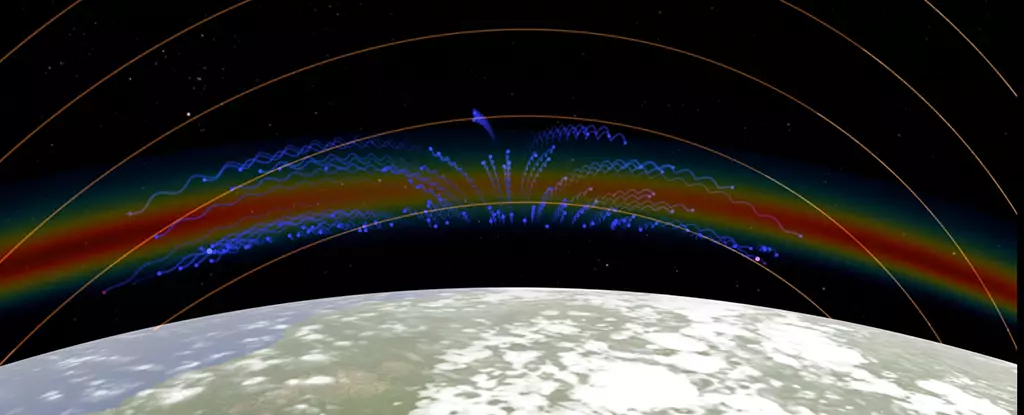NASA scientists have recently made a fascinating discovery in Earth’s ionosphere, shedding light on the complex dynamics of this atmospheric layer. The Global-scale Observations of the Limb and Disk (GOLD) imaging instrument has captured images of peculiar X and C shapes in the ionosphere, revealing unexpected formations and behaviors. These shapes, formed by plasma bands of charged particles influenced by Earth’s magnetic field, challenge previous understandings and open up new avenues for research.
One of the most surprising findings is the appearance of merging crests forming X shapes not only during geomagnetically disturbed conditions but also during ‘quiet times’. This suggests that lower atmospheric conditions may be playing a role in pulling the plasma downwards, resulting in these unique formations. The data from GOLD has provided researchers with a clearer picture of how these shapes manifest and the potential factors contributing to their formation.
In addition to the X shapes, the observation of C-shaped and reverse C-shaped bubbles in the plasma has puzzled scientists. These formations, believed to be influenced by winds on Earth, have been detected in close proximity, challenging existing theories. The presence of these C shapes, sometimes appearing only 400 miles apart, raises questions about the localized factors at play, such as wind shears or tornadoes. While these occurrences are currently rare, their significance in understanding ionospheric phenomena cannot be understated.
The ionosphere plays a crucial role in enabling radio waves to travel long distances, making discoveries in this field vital for improving communication and navigation technologies. Any disruptions in the ionosphere, as seen with the unusual shapes detected by GOLD, could have implications for essential infrastructure relying on radio and GPS signals. By unraveling the mysteries of the ionosphere, scientists can enhance our understanding of how these systems operate and develop strategies to mitigate potential disruptions in the future.
The advancements in technology and scientific research, exemplified by the GOLD data, offer a glimpse into the ever-evolving nature of our understanding of Earth and the Universe. The diverse shapes and behaviors observed in the ionosphere challenge conventional wisdom and prompt further exploration into the intricacies of our atmosphere. As astrophysicist Jeffrey Klenzing notes, the dynamics of the atmosphere are far more complex than previously imagined, underscoring the importance of continued research and innovation in unraveling the mysteries of our world.
The discovery of strange shapes in Earth’s ionosphere not only enhances our understanding of this critical atmospheric layer but also showcases the power of cutting-edge technology in unraveling nature’s mysteries. By delving into the complexities of the ionosphere, scientists are paving the way for advancements in communication, navigation, and atmospheric science, ultimately deepening our connection to the ever-changing cosmos around us.


Leave a Reply